
views
First Aid
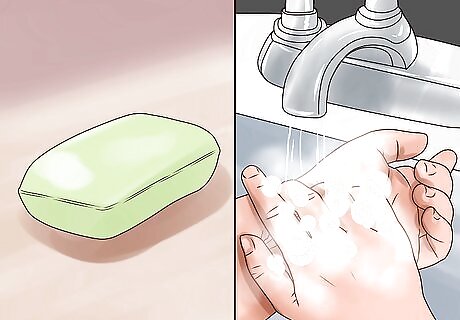
Wash your hands with mild soap and water. Before you touch the open wound, clean your hands. Then, put on medical gloves if you can. This will protect the wound from exposure to bacteria and germs from your hands. If you are touching someone else’s open wound, wear medical gloves to protect your hands and prevent the spread of germs. If you don’t have access to soap and water, do your best to wipe off any obvious dirt and use a little hand sanitizer if you have it.

Rinse the wound under warm, running water. Let the water wash off any dirt or debris on the wound. Do not scrub or pick at the wound while you rinse it, as this can cause more damage. Rinse from the center of the wound out, then pat the area dry with a clean cloth or gauze pad. If possible, use sterile saline solution to rinse the wound rather than plain water. You can also use a commercial wound cleaner, such as Constant-Clens, if you have it. If you have soap, use it to wash the area around the wound. However, try not to get soap directly in the wound, since it can be irritating. Don’t rinse the wound with irritating antiseptics, such as alcohol or hydrogen peroxide. These chemicals can inflame the damaged tissue and slow down healing.
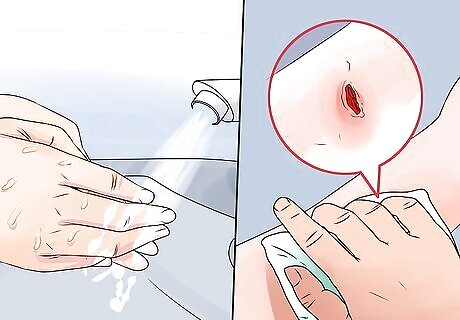
Use a clean, dry cloth and direct pressure to stop the bleeding. Press on the wound with a clean, dry cloth, applying even pressure with your hands for several minutes until the bleeding slows. Minor wounds should stop bleeding within a few minutes once you apply pressure to them. If the wound does not stop bleeding after you have applied pressure for 10-15 minutes, go to the doctor. The wound may be too deep for you to treat at home.
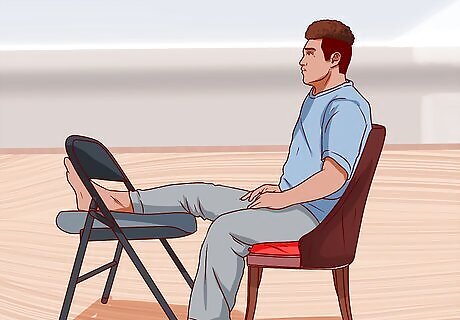
Elevate the wound above your heart to slow the bleeding. If the wound is on your leg, foot, or toes, set your leg on a chair or cushion so it sits above your heart. If the wound is on your arm, hands, or fingers, raise it above your head to help slow the bleeding. If the wound is on your torso, head, or genital area, seek medical attention as soon as you can. All head injuries, in particular, need to be evaluated by a doctor. If the open wound does not stop bleeding after 10-15 minutes, despite elevating it and applying pressure, go see your doctor.
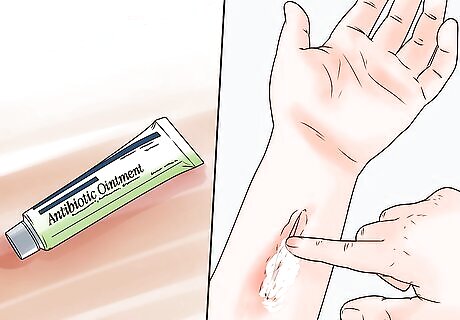
Apply antibiotic ointment or petroleum jelly to the wound. Use clean gauze to apply 1-2 layers of ointment or jelly. This will keep the area moist and prevent infection, which will speed up healing. Be careful not to press too hard on the open wound when applying the ointment, especially on any areas that are red or swollen. A special silicon wound dressing is also a good option for keeping your wound moist and protected, which can promote faster healing. You can get these dressings over-the-counter in most drugstores.
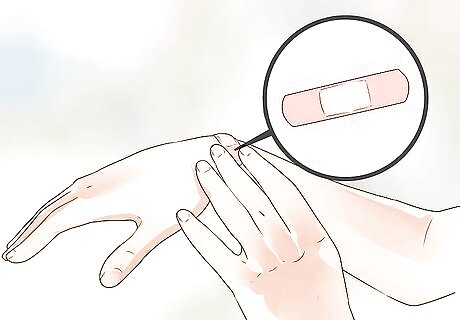
Put an adhesive bandage on a small cut. Use a Band-Aid that is large enough to cover the cut. Take care not to cover any of the wound with the sticky adhesive on the bandage, since this could irritate the wound.

Use gauze on a larger wound. Take a piece of gauze that is big enough to cover the open wound or use clean scissors to cut the gauze to fit. Place it on the wound and use medical tape around it to secure it. If you do not have gauze on hand, you can use a Band-Aid, as long as it is big enough to cover the entire wound.
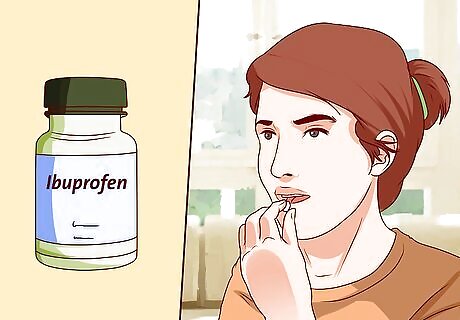
Take over-the-counter pain medication. The open wound may feel sore or irritated as it heals. Take acetaminophen (Tylenol) or ibuprofen (Motrin) to help with the pain every 4-6 hours or as specified on the label. Follow the dosage recommended on the label and never exceed the recommended amount. Do not take aspirin, as it can cause the wound to bleed.
Daily Wound Care
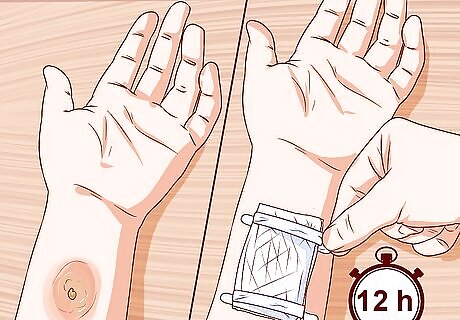
Change the dressing 2 times a day. Wash your hands before you change the dressing. Remove the bandage in the direction of your hair growth so you do not damage the skin. If you notice the scab is stuck to the bandage, soak the bandage with a mixture of 1 tsp (6 g) of salt in 1 gallon (3.8 l) of water, or use sterile water if you have it on hand. After the bandage has soaked for a few minutes, gently remove it. If the scab is still stuck to the bandage, soak it again until it comes loose. Do not tug or pull on it, as this can damage the wound and make it bleed again. Once you remove the bandage, rinse the wound with warm water or sterile saline solution and pat it dry with a clean cloth or gauze pad. Then, apply antibiotic ointment or petroleum jelly directly to the wound or to the bandage to promote healing. Always change the bandage if it gets wet or dirty.
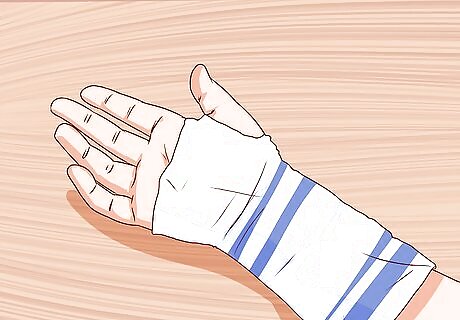
Avoid picking or scratching the wound. The open wound may feel itchy or irritated as it starts to heal, especially once it starts to scab. Resist the urge to pick, scratch, or rub at the open wound, as this will slow down healing. Keep the wound covered so you are not tempted to touch it. You can also apply ointment to the wound, which can keep the skin moist and prevent it from itching as it heals.
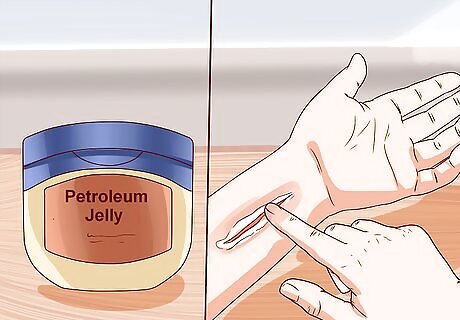
Do not use strong antiseptics on the wound. Hydrogen peroxide, rubbing alcohol, and iodine are caustic and can burn your tissues, damaging your skin further and causing scarring. Antibiotic ointment and petroleum jelly are more than enough to keep the wound sterile and clean.
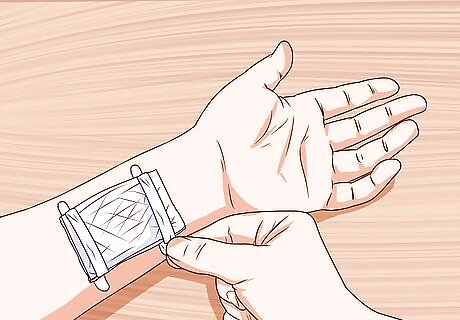
Keep the wound covered and protected. Do not expose the open wound to air, as this will slow down healing and can lead to scarring. Keep the wound bandaged at all times, especially if you are going outside and exposing your skin to the sun. The only time you should take off the bandage is in the shower or bath, as the moisture is good for the wound. Once the wound has healed over with new skin, you can expose it to the air. Continue to bandage it for protection in situations where it might reopen, such as sporting events. It’s especially important to cover wounds in places where they’ll be exposed to lots of dirt or irritation from your clothing, such as on your hand or knee.
Eat healthy foods and stay hydrated to promote faster healing. Taking good care of your whole body will help you heal better and faster. While your wound is healing, drink plenty of water and eat a balanced diet. To get all the vitamins and minerals you need, eat fruits and vegetables in a rainbow of colors. Choose healthy sources of protein, such as lean meats, eggs, yogurt, nuts, and beans. There’s some evidence that intermittent fasting can speed up the healing process. Talk to your doctor about how to fast safely, especially if you have a medical condition such as diabetes.
Medical Care

Go to the doctor if the wound is deeper than ⁄4 inch (0.64 cm). Wounds this deep will usually require professional medical care and sometimes stitches to heal properly. Do not try to treat them at home, as this can lead to infection and scarring.
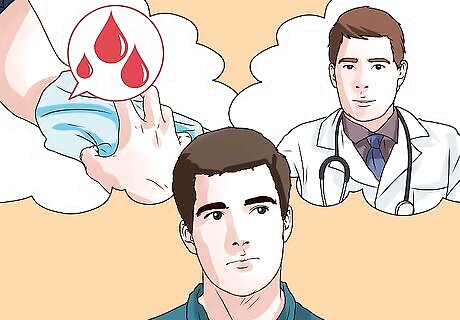
See your doctor if the wound does not heal within 2-3 weeks. If the wound does not close and begin to heal, it may be deeper than you realized and require professional medical care. Go see your doctor for treatment. Delayed wound healing can also be a sign of an infection or an underlying medical condition, such as poor circulation.
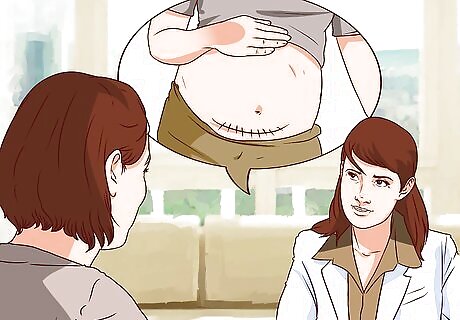
Seek medical care if the wound appears infected. If you see signs of infection, see a doctor as soon as you can. The infection could get worse if you delay. The wound may be infected if it is: Hot Red Swollen Increasingly painful Full of pus
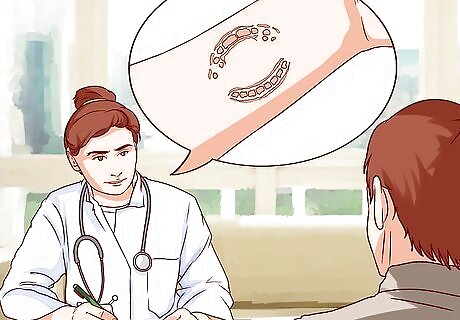
Go to the doctor if the wound is from an animal bite. All animal bites, no matter how small, need to be seen by a doctor. They will follow a protocol established by the Center for Disease Control and Prevention (CDC) and Animal Control. Most bites, from mild to severe, will need to be treated with an antibiotic, such as Augmentin. If you were bitten by a wild animal, you may need to get a rabies shot. Your doctor might also recommend a tetanus shot, especially if you haven’t had one in the last 5 years.
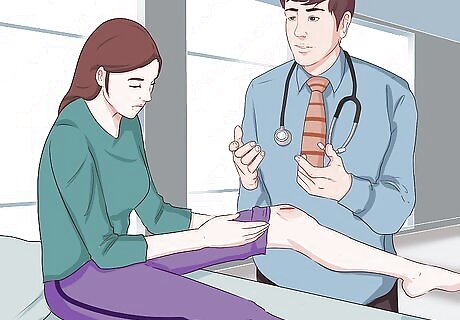
Allow your doctor to treat the wound. Your doctor will examine the wound to determine how severe it is. They may then recommend stitches to close the wound and help it to heal. If the cut is small, your doctor may use medical glue to close the wound. If the wound is large and deep, they will use medical thread and a needle to stitch it closed. You will then need to go back to the doctor’s office in about a week to get the stitches taken out.











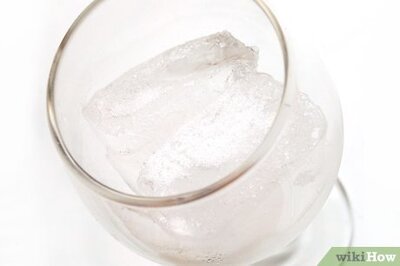







Comments
0 comment